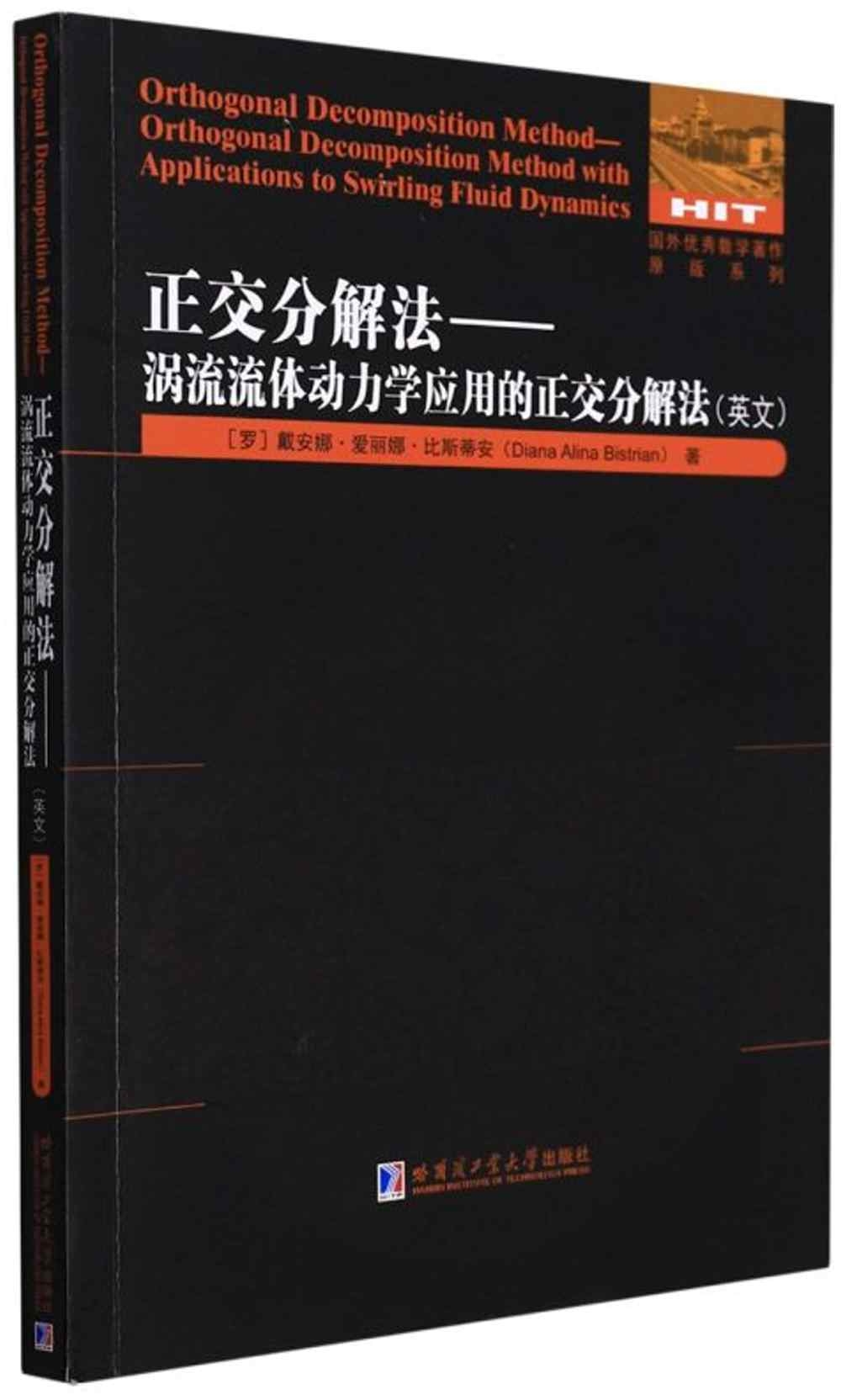在旋進流形式下產生的流體動力不穩定性.稱為渦流,在Francis水輪機尾水管的壁面上產生高壓不穩定波動,導致了包括疲勞損壞在內的比較差的渦輪性能。該現象的建模和這個渦流系統的流體動力學不穩定性的數值研究是本書調研的任務。作為經典方法的替代方法,本書呈現了一種新的渦流流體解析法,該方法基於近的一種具有正交分解的譜配置的數學方法。
本書呈現的數學模型可以恢復水輪機特性預測中的資訊,而無須計算三維的不穩定流。本書提供了有價值的工具,可以在流道設計的早期階段評估非設計運行狀態下的水輪機性能。本書提供的數學工具為解決現代科學中出現的跨學科問題提供了可轉移的知識,這些知識可以應用於許多不同的學科之中。
| FindBook |
有 1 項符合
正交分解法--渦流流體動力學應用的正交分解法(英文)的圖書 |
 |
正交分解法--渦流流體動力學應用的正交分解法(英文) 作者:(羅)戴安娜·愛麗娜·比斯蒂安 出版社:哈爾濱工業大學出版社 出版日期:2022-01-01 語言:簡體中文 規格:平裝 / 171頁 / 13 x 19 x 1 cm / 普通級/ 1-1 |
| 圖書館借閱 |
| 國家圖書館 | 全國圖書書目資訊網 | 國立公共資訊圖書館 | 電子書服務平台 | MetaCat 跨館整合查詢 |
| 臺北市立圖書館 | 新北市立圖書館 | 基隆市公共圖書館 | 桃園市立圖書館 | 新竹縣公共圖書館 |
| 苗栗縣立圖書館 | 臺中市立圖書館 | 彰化縣公共圖書館 | 南投縣文化局 | 雲林縣公共圖書館 |
| 嘉義縣圖書館 | 臺南市立圖書館 | 高雄市立圖書館 | 屏東縣公共圖書館 | 宜蘭縣公共圖書館 |
| 花蓮縣文化局 | 臺東縣文化處 |
|
|
圖書介紹 - 資料來源:博客來 評分:
圖書名稱:正交分解法--渦流流體動力學應用的正交分解法(英文)
內容簡介
作者介紹
戴安娜·愛麗娜·比斯蒂安
羅馬尼亞人,在羅馬尼亞的蒂米什瓦拉西部大學學習數學和計算機科學。她是理學學士,後獲得了蒂米什瓦拉西部大學的計算機和資訊技術博士學位。她的研究方向為計算數學和渦流流體動力的數值方法。
羅馬尼亞人,在羅馬尼亞的蒂米什瓦拉西部大學學習數學和計算機科學。她是理學學士,後獲得了蒂米什瓦拉西部大學的計算機和資訊技術博士學位。她的研究方向為計算數學和渦流流體動力的數值方法。
目錄
1 Introduction
2 Mathematical issues on hydrodynamic stability of swirling flows
2.1 Linearized disturbance equations
2.2 The method of normal modes analysis
2.3 Definition of temporal and spatial instability
2.4 Studies upon stability of swirling flows cited in literature
3 Mathematical model for a swirling system - a Francis turbine runner case
3.1 Discrete operator formulation of the hydrodynamic model
3.2 Axis and wall boundary conditions
4 Orthngonal decomposition method for stability eigenvalue problems
4.1 Motivation of using the spectral methods in hydrodynamic stability problems
4.1.1 The L2 -Projection method
4.1.2 The collocation method
4.2 0rthogonal polynomial decomposition base
4.2.1 Considerations on shifted Chebyshev polynomials
4.2.2 Orthogonality of the shifted Chebyshev polynomials
4.2.3 Evaluation of the shifted Chebyshev derivatives
4.3 Computational domain and grid setup
5 Numerical approach for non-axisymmetrie stability investigation
5.1 Boundary adapted decomposition
5.1.1 Description of the method
5.1.2 Interpolative derivative matrix
5.1.3 Implementation of the boundary adapted decomposition
5.2 Summary of this chapter
6 Numerical approach for axisymmetric and bending modes stability investigation
6.1 A modified L2-Projection method based on orthogonal decomposition
6.1.1 Description of the method
6.1.2 Implementation of the projection method using symbolic and numeric conversions
6.2 Summary of this chapter
7 Spectral descriptor technique for hydrodynamic stability of swirling flows
7.1 The analytical investigation of the eigenvalue problem
7.2 Numerical approach based on collocation technique
7.2.1 Interpolative derivative operator
7.2.2 Parallel implementation of the spectral collocation algorithm
7.3 Summary of this chapter
8 Validation of the numerical procedures on a Q-vortex problem
8.1 The Q-vortex profile
8.2 Radial boundary adapted method validation and results
8.3 L2 -Projection method validation and results
8.4 Spectral descriptor method validation and results
8.5 Comparative results
9 Parallel and distributed investigation of the vortex rope model
9.1 Considerations about parallel computing
9.2 Theoretical model and computational domain
9.3 Influence of discharge coefficient on hydrodynamic stability
9.3.1 Investigation of axisymmetric mode
9.3.2 Investigation of bending modes
9.4 Study of absolute and convective instability of the swirl system with discrete velocity profiles
9.4.1 Computational aspects
9.4.2 Validations with experimental results
9.5 Accuracy and convergence of the algorithm
9.6 Evaluation of the parallel algorithm performance
9.7 Summary of this chapter
10 Conclusions
10.1 Book summary
10.2 Final remarks
Bibliography and references
編輯手記
2 Mathematical issues on hydrodynamic stability of swirling flows
2.1 Linearized disturbance equations
2.2 The method of normal modes analysis
2.3 Definition of temporal and spatial instability
2.4 Studies upon stability of swirling flows cited in literature
3 Mathematical model for a swirling system - a Francis turbine runner case
3.1 Discrete operator formulation of the hydrodynamic model
3.2 Axis and wall boundary conditions
4 Orthngonal decomposition method for stability eigenvalue problems
4.1 Motivation of using the spectral methods in hydrodynamic stability problems
4.1.1 The L2 -Projection method
4.1.2 The collocation method
4.2 0rthogonal polynomial decomposition base
4.2.1 Considerations on shifted Chebyshev polynomials
4.2.2 Orthogonality of the shifted Chebyshev polynomials
4.2.3 Evaluation of the shifted Chebyshev derivatives
4.3 Computational domain and grid setup
5 Numerical approach for non-axisymmetrie stability investigation
5.1 Boundary adapted decomposition
5.1.1 Description of the method
5.1.2 Interpolative derivative matrix
5.1.3 Implementation of the boundary adapted decomposition
5.2 Summary of this chapter
6 Numerical approach for axisymmetric and bending modes stability investigation
6.1 A modified L2-Projection method based on orthogonal decomposition
6.1.1 Description of the method
6.1.2 Implementation of the projection method using symbolic and numeric conversions
6.2 Summary of this chapter
7 Spectral descriptor technique for hydrodynamic stability of swirling flows
7.1 The analytical investigation of the eigenvalue problem
7.2 Numerical approach based on collocation technique
7.2.1 Interpolative derivative operator
7.2.2 Parallel implementation of the spectral collocation algorithm
7.3 Summary of this chapter
8 Validation of the numerical procedures on a Q-vortex problem
8.1 The Q-vortex profile
8.2 Radial boundary adapted method validation and results
8.3 L2 -Projection method validation and results
8.4 Spectral descriptor method validation and results
8.5 Comparative results
9 Parallel and distributed investigation of the vortex rope model
9.1 Considerations about parallel computing
9.2 Theoretical model and computational domain
9.3 Influence of discharge coefficient on hydrodynamic stability
9.3.1 Investigation of axisymmetric mode
9.3.2 Investigation of bending modes
9.4 Study of absolute and convective instability of the swirl system with discrete velocity profiles
9.4.1 Computational aspects
9.4.2 Validations with experimental results
9.5 Accuracy and convergence of the algorithm
9.6 Evaluation of the parallel algorithm performance
9.7 Summary of this chapter
10 Conclusions
10.1 Book summary
10.2 Final remarks
Bibliography and references
編輯手記
|











